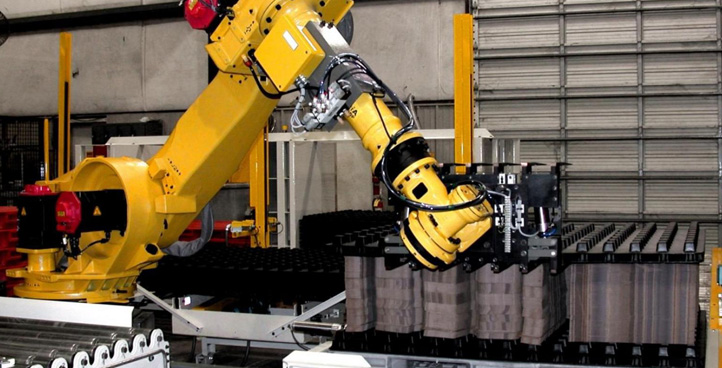Material handling robotics are automated robotic systems designed for material handling applications such as palletizing, packaging, pick and place, transportation, and sorting. They help improve operational efficiency by reducing human errors and lowering operational costs for businesses. Material handling robots can lift heavy payloads, operate in hazardous environments, and improve productivity by working continuously without breaks.
The global material handling robotics market is estimated to be valued at USD 24.21 Bn in 2024 and is expected to exhibit a CAGR of 10% over the forecast period from 2024 to 2031.
Key Takeaways
Key players operating in the material handling robotics are ABB, Kuka AG, FANUC Corporation, Yaskawa Electric Corporation, Kawasaki Heavy Industries Ltd., Universal Robots, Denso Corporation, Epson Robots, Stäubli International AG , Omron Corporation, Nachi-Fujikoshi Corporation, Comau S.p.A. and Adept Technology, Inc. These players are focusing on developing autonomous and collaborative robots to handle a variety of material handling applications.
The growing e-commerce industry is presenting major growth opportunities for Material Handling Robotics Market Size manufacturers. Robots help improve order fulfillment speed and accuracy in warehouses and fulfillment centers of e-commerce giants. Adoption of automation is growing rapidly to meet rising consumer demand and expectations.
North America accounts for the largest share in the overall material handling robotics market owing to high automation adoption rate across industries such as automotive, electronics, food and beverages in the region. However, Asia Pacific is expected to surpass North America and become the largest market during the forecast period due to rapid industrialization and favorable government policies supporting automation adoption in countries such as China and India.
Market Drivers
Rising labor costs is a key driver propelling the demand for material handling robots. Automation helps reduce dependency on human labor and lowers operational costs for businesses over the long term. Due to rising minimum wages and shortage of labor, companies are increasingly adopting automation solutions like material handling robots. It is estimated that costs associated with human labor such as wages, health insurance and overtime pay can be reduced by over 30% through robotics adoption. This is a major factor encouraging more businesses to utilize robotic process automation.
PEST Analysis
Political: Material handling robotics market is positively impacted by government policies and regulations that encourage adoption of industrial automation technologies across sectors like automotive, electronics, food & beverage and others.
Economic: Growth in the Material handling robotics market is supported by economic growth in emerging nations and strong demand from end-use industries. Recovery in industrial sector post pandemic also supporting demand.
Social: Changing work culture and preferences are making Industries incline towards robotics technologies for material handling applications. Solutions like collaborative robots are gaining acceptanc
Technological: Advancements in technologies like artificial intelligence, Internet of Things, cloud computing are enhancing abilities of material handling robots. Collaborative robots are enabling efficient human-robot collaboration.
The geographical region where market in terms of value is concentrated currently is Asia Pacific. Countries like China, Japan, South Korea are major manufacturing hubs with strong demand from industries like automotive, electronics and others. Growth in manufacturing and infrastructural development is driving adoption of material handling robots.
North America is expected to be one of the fastest growing region for material handling robotics market during the forecast period. Presence of major end-use industries along with supportive government policies is expected to boost market growth in this region. Additionally, increasing labor costs and need for operational efficiency is propelling demand especially from SMEs and warehousing & logistics segment.
*Note:
1. Source: Coherent Market Insights, Public sources, Desk research
2. We have leveraged AI tools to mine information and compile it

